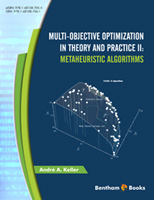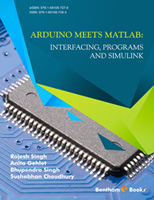After more than six decades of research, artificial intelligence is now being used for many endeavors, helping people manage their lives, secure their homes and information, perform routine tasks in homes, hospitals, and offices, and automate their travel. The applications are widespread and so are the technologies needed to create them. This book provides a comprehensive treatment of intelligent systems and includes contributions from leading researchers and developers in a range of disciplines.
The need for the book appears obvious: computational systems are fast becoming ubiquitous and pervasive and we would like them to be effective and friendly. They are ubiquitous because computing power and access to the Internet are being made available everywhere; they are pervasive because computing is being embedded in the very fabric of our environment. For example, our houses, our furniture, and our clothes will contain computers that will enable our surroundings to adapt to our preferences and needs. This leads also to unprecedented complexity in our envisioned systems, because commercial, educational, and industrial enterprises will be linked, and human spheres previously untouched by computing and information technology, such as our personal, recreational, and community life, will be affected.
In the midst of the complexity, we need the computational systems with which we interact to behave intelligently, i.e., rationally, and there are many facets to intelligent behavior. These facets do not exist in isolation, although they can be investigated individually. This has been the primary investigative approach so far in computer science research. However, the next major advances will come from more comprehensive approaches, where combinations of the facets will produce intelligent behaviors needed for complex and realistic domains. Creating effective combinations will require that researchers understand the various facets, and this book provides some of the required understanding.
Dr. Faria Nassiri Mofakham has assembled papers that span the fundamental areas of interactions among intelligent software agents, robot languages, ethical behavior of agents, and human language, and the application areas of manufacturing, finance, and education. She leads with a paper by Ghasem-Aghaee, Ören, and Yilmaz that covers both areas, in that it surveys the use of simulation to investigate agent-based behaviors and to control agent-based behaviors in applications. The paper is exceptionally thorough and provides a basis for considering the papers that follow, notably the paper by Coelho that considers simulated worlds of intelligent systems, the paper by Aydogan et al. that considers simulated negotiations, and the paper by Magessi and Antunes that simulates human attitudes using agents.
For computational systems to be considered intelligent, they must be able to interact with humans in ways that seem natural, i.e., as other humans would. This requires the systems to understand human emotions, as Basiri et al. investigate, and to behave ethically, as Ören and Yilmaz analyze. They must also operate efficiently and yield plausible results when processing large amounts of information, as Esmaelian, Shahmoradi, and Nemati show in their paper on classification.
Finally, the fundamental advances must be applied to important problems to demonstrate their utility and capabilities. The paper by Nazemi and Heidenreich uses advances in machine learning to improve the understanding of bond rates in financial markets. The paper by Gostar, Hoseinnezhad, and Bab-Hadiashar addresses sensor management from the perspective of intelligent sequential decision-making in the presence of stochastic uncertainty. Their results have broad applicability, including to the Internet of Things. Basiri and Ghasem-Aghaee consider how complexity can be reduced in large-scale systems using an AI approach based on multi-agent holonic systems that self-organize and behave autonomously. Modern manufacturing can benefit from this approach. The paper by Tafazoli and Parra describes how robots and artificial intelligence can improve education, specifically the learning of natural languages.
In summary, I am excited by the possibilities for new computational systems that are engendered by this book, as well as by the challenges that remain. This book provides a solid foundation for advances in the intelligent behavior of computational systems.
Dr. Michael N. Huhns
Distinguished Professor Emeritus of Computer Science and Engineering,
University of South Carolina,
Columbia, SC,
USA





